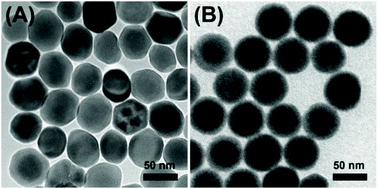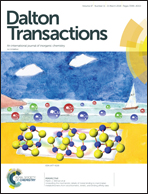Redox-responsive UCNPs-DPA conjugated NGO-PEG-BPEI-DOX for imaging-guided PTT and chemotherapy for cancer treatment†
Abstract
The disulfide bond (–S–S–) is an enormously valuable functional group in a variety of chemical and biological agents that display effective reactivity or biological activities (e.g., antitumor activities). The disulfide bonds prevalent in proteins are somewhat oxidizing in the extracellular space; however, such disulfide bonds can rarely be found inside cells because of disulfide cleavage reactions facilitated by abundant free cellular thiols, including glutathione (GSH), which is the most important common thiol-containing small molecule. Interestingly, intracellular GSH concentrations are considerably higher in cancer cells than in analogous normal cells; this feature may prove to be significant in the development of anticancer drug delivery systems (DDS). Moreover, upconversion nanoparticles (UCNPs) have been extensively investigated in multimodal imaging, photodynamic therapy (PDT) and photothermal therapy. UCNPs exploit near-infrared excitation instead of ultraviolet excitation and possess exclusive properties, which include greatly increased penetration depth in biological samples and reductions in background autofluorescence, photobleaching and photodamage to biological specimens. These fascinating optical features of UCNPs may broaden their prospects in the fields of imaging and therapy. Graphene has emerged as a flat monolayer of carbon atoms that are tightly embedded in a two-dimensional (2D) honeycomb lattice. Widespread research has been carried out on graphene in recent years owing to its exclusive shape and size, as well as innumerable fascinating physical and chemical properties. Owing to their high optical absorption in the near-infrared (NIR) region, graphene and GO have been extensively employed for photothermal therapy (PTT). In this study, we attempted to merge the properties of these compounds by conjugating UCNPs and NGO-PEG-BPEI-DOX into a single platform for chemotherapy and photothermal therapy.



 Please wait while we load your content...
Please wait while we load your content...